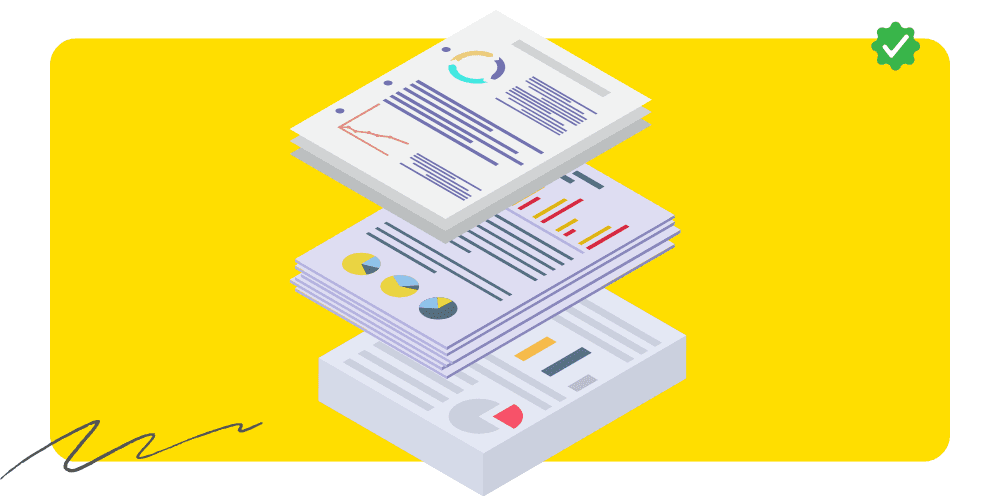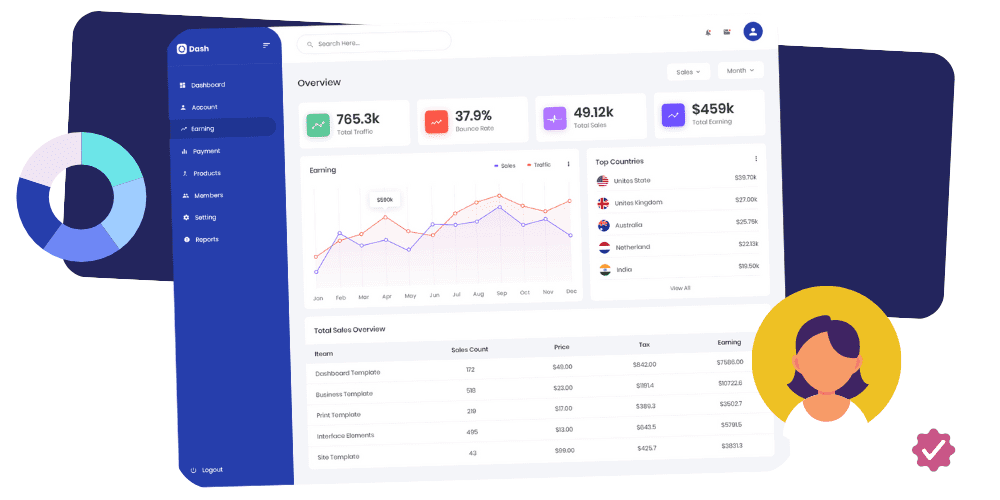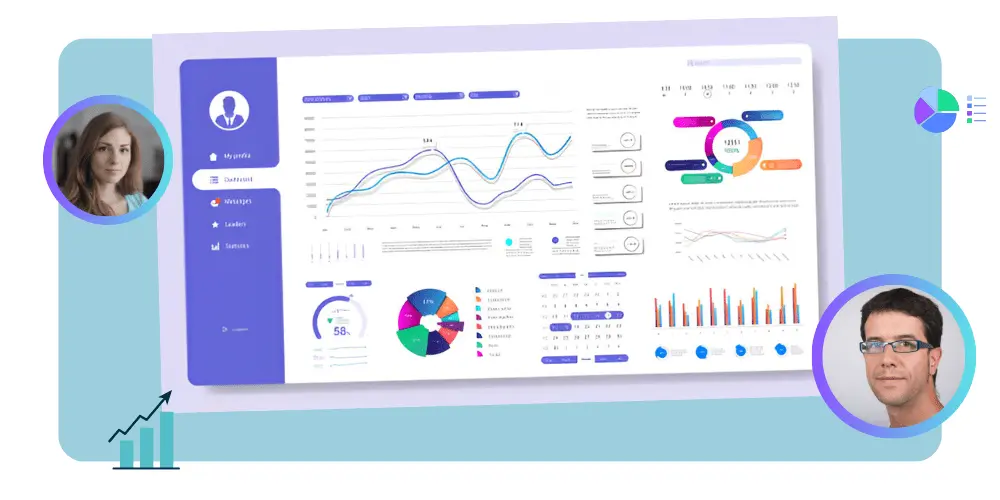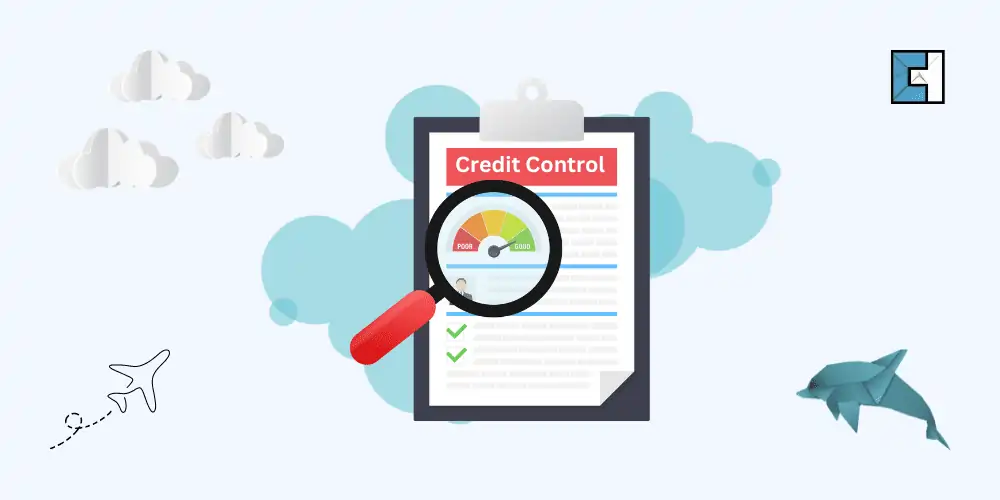Cash flow and debt problems are two of the major issues that companies want to overcome once they start getting customers. A well-maintained and effective credit control system in place can help a business optimise its cash flow while avoiding significant debt accumulation.
Maintaining financial stability and ensuring efficient corporate operations depend on credit control. Businesses can extend credit while reducing the risk of bad debts and maximising cash flow. Businesses may safeguard their financial well-being and develop solid client relationships by implementing efficient credit control procedures.
Establishing policies and methods to manage client credit is called credit control in accounting. As part of this, creditworthiness is assessed, credit limits are set, invoices are generated, debts are collected, and payment patterns are carefully observed. Businesses can preserve financial discipline and protect profits by employing a watchful credit control strategy.
Businesses of all sizes must implement an effective credit control system. It assists in preventing cash flow problems and lowers the possibility of accruing bad debts. Additionally, it builds a platform for long-term success, deepens ties with clients and suppliers, and improves a company’s reputation.
Businesses may manage their receivables proactively, spot potential credit risks, and take the necessary steps to avoid losses using a sound credit control system. Businesses can improve their cash flow and overcome financial obstacles by ensuring prompt payments and preventing large debt accumulation.
What Is Credit Control?
Credit control refers to managing and regulating credit within a business or organisation. It involves monitoring and overseeing the credit extended to customers, ensuring timely payments, and minimising the risk of bad debts. Effective credit control practices aim to strike a balance between offering credit to customers and mitigating the associated risks. By implementing robust credit control measures, businesses can protect their cash flow, reduce the likelihood of late payments and defaults, and maintain healthy customer relationships. Credit control is crucial in maintaining financial stability and ensuring smooth business operations.
Elements Of Effective Credit Control
A credit control policy will include the following four elements:
Credit Period
The duration within which customers repay, e.g., 48 months.
Cash Discounts
Incentives for customers to repay in cash before a specific deadline, leading to quicker credit repayment.
Credit Standards
Criteria based on a customer’s credit history to determine eligibility for credit.
Collection Policy
A company’s strategy to pursue slow or late repayments effectively.
Ten Reasons You Need A Credit Control Process
- Late payments can lead to insolvency, restricting cash flow and hindering payment to suppliers and employees.
- A robust process avoids misunderstandings in business terms, invoicing errors, and dealing with unideal clients, saving time and money.
- Cash flow difficulties may result in an inability to pay wages or in a client’s business overdraft.
- Avoid being used as a client’s business overdraft by setting clear payment terms and expectations.
- Strong cash flow enables investment in growth and reduces reliance on costly credit facilities.
- Debt collection without a robust process wastes time and demotivates staff.
- Proper cash flow management reduces reliance on high-interest overdrafts and credit facilities.
- Inadequate credit control risks damaging relationships with customers and suppliers.
- Mismanaged cases can lead to costly court proceedings with no guarantee of payment.
- Implementing a robust Credit Control process safeguards financial stability and fosters healthy business relationships.
Objectives Of Credit Control Management Across All Business Types
Ultimately, the key objectives of Credit Management across all Industries and business types are:
1. To achieve monthly targets, including delinquent DSO, cash collection and business-specific indicators
2. To obtain payments due within the agreed payment term period
3. Establish and maintain Interdepartmental relationships to support business objectives
4. Identify high-risk accounts early using the process and policy established
5. Maximise profit on profitable sales
How Can A Professional Credit Controller Help?
A weak credit control system can devastate a company’s cash flow. The problem might cripple your ability to pay employees and immediate vendors. The long-term impact of being owed considerable amounts of money while making timely payments can be even worse, as cash flow problems for an extended period might lead to the closure or liquidation of your company.
The problems of cash flow and bad debt can be avoided if you utilise professional credit control services.
- Learn about Creditors and Debtors to better understand how to read your balance sheet.
- Company Closure Tax Efficiently
What Does A Credit Controller Do?
The credit controller plays a pivotal role in tracking and maintaining the credit-control system of the company. Business experts believe a credit controller must have the following skills and qualities.
- They should know the importance of the credit control system.
- They should have the ability to work productively under intense pressure.
- The credit controller of the company must possess exceptional negotiation skills.
- They must have enough expertise and knowledge to understand and communicate financial matters.
- They must be an expert in computer and administrative skills.
If you are a startup owner who needs to focus on other value-adding aspects of your business, you can save time by speaking to experts. A competitive accounting firm can provide credit control services to ensure that you avoid financial troubles in the future. They can also help you assess cash burn and create an effective cash flow forecast.

Take Charge Of Your Credit Control Today
Implement effective credit management practices to safeguard financial stability, minimise risks, and optimise cash flow. Get Started
Guide To Implementing Successful Credit Control
Effective credit control techniques are crucial aspects of financial management for businesses, involving managing and mitigating risks associated with extending credit to customers. Implementing effective credit control practices ensures timely payments, reduces the likelihood of bad debts, and maintains a healthy cash flow.
This involves key components such as credit evaluation, setting credit limits, invoicing, debt collection, and monitoring payment behaviour. By establishing a well-structured credit control system, businesses can proactively manage receivables, identify risks, and minimise financial losses. Companies must conduct credit-worthiness checks, agree on terms and conditions, and have reliable systems for order fulfilment, invoicing, and tracking overdue payments.
Check The Creditworthiness Of Borrowers
When extending credit to borrowers, several important considerations arise. One key question is whether customers have the financial capacity to repay the debt. Assessing the likelihood of customers facing cash shortages before the due period is essential. Conducting creditworthiness checks demonstrates the company’s commitment to its credit control system, enhancing customer trust.
Our accountants strongly advise requesting that credit customers complete a credit or trading application form at the start of their business relationship. This form should include essential details necessary for credit evaluation. By collecting relevant information through the application form, businesses can make informed decisions about extending credit, ensuring a responsible and effective credit control process.
- If applicable, provide the full business name, including other trade names.
- Include the UK registration number if the business is registered in the UK.
- Specify the requested credit amount.
- Share the contact details of the individual responsible for payment queries, including name, address, email, phone, or fax number.
- Clearly state the address for sending invoices, separate from the delivery address, and verify the statement address if different.
- Mention the name of the bank the business uses, the address, the sort code, and the account number.
- Furnish information about at least two trade references from regular vendors or suppliers.
- Seek consent to obtain bank reference and credit references.
- Provide details about the business’s owners and managers.
- Disclose the trading structure of the company, such as a partnership, sole trader, or LLP.
We advise you to obtain credit references from a trade supplier. However, before you acquire a credit reference, you must verify whether the reference is an actual supplier to the business.
Information You Need To Request Before Granting Credit?
You need to request the following information:
- Request for verification of the customer’s trading name and address.
- Ask about the trading period between the supplier and your potential customer.
- Ask what terms of credit they offer to the customer.
- Ask if your new customers return the debt within the time frame provided.
- Ask about the customer’s average monthly expenditure.
- Verify if the reference is associated with your customer other than for business-related purposes.
- Request for any information that might be relevant.
Another aspect to consider and be careful about is Country Court Judgements (CCJs). Ensure that you have checked for County Court Judgements (CCJs).
- You can investigate information about the CCJs registered in the past six years online.
- If many judgments pile up, this is a red flag confirming that the firm is facing financial difficulties. It may also indicate the company has an unfortunate history of not paying invoices.
- You can access CCJ information for individuals, along with businesses.
Related: Your guide to getting paid on time as a small business.

Considerations To Keep In Mind When Offering Credit
If you doubt the credibility of your customers, you can refuse to offer them any credit. It’s your choice to make in the end; however, you must have a credit policy to save time and effort.
We recommend setting a minimum order size for a credit account to decide whether it’s worth offering credit to small customers.
Similarly, it’s also advisable to set a maximum limit for borrowers. When placing a maximum limit, take the following considerations into account:
- The amount of credit requested by the customer.
- Your results after carrying out credit checks.
- The amount you can afford to risk losing.
- The amount of credit you can afford to give, considering the payment you must make to your suppliers on short-term credit.
- The alternatives the customer can opt for if you don’t provide credit.
- The customer’s willingness to accept an alternative, such as a discount for payment with an order.
Offering credit to borrowers can be very risky. Therefore, talking to an accountant is advisable to help you manage your risks effectively.
Giving Credit
It is your choice whether to provide credit to a customer or not. Decide on a credit policy.
Set a minimum order size for credit accounts
- Is it worth giving small customers credit?
Set a maximum credit limit for each customer
Take into account:
- How much credit the client desires
- What you learned from your credit checks
- What you can afford to lose if things go wrong
- How much credit can you extend, especially if you must pay your suppliers on shorter credit terms?
- If you don’t offer credit, what options do customers have?
- whether the client would be open to an alternative, like a discount for payment at the time of order
Minimise the risks of giving credit
- Set a low initial credit limit for new clients. When the quality of your bond makes it appropriate, you can boost the upper limit.
- Sign up for a merchant account for credit cards. Consult your bank for advice.
- Think about obtaining credit insurance.
- Consider using most credit reference companies’ monitoring services to monitor your client’s financial situation.
- Take into account the benefits of factoring for cash flow and credit control.
Use your credit limits.
- Get cash if a customer wishes to make a larger purchase than their credit line would allow. When a consumer exceeds your credit limit, demand payment before approving future credit orders.
- Credit limitations must be examined frequently. If customers are given more credit elsewhere, you can lose business.
Enhance Financial Stability With Expert Credit Control Accounting Services
Contact Clear House Accountants today for tailored solutions to optimise cash flow and minimise bad debt risk
Mitigate The Risks Of Credit Provision
You can also mitigate the risks of credit provision by:
- Setting a moderate credit limit for new customers in the beginning. Raise the credit limit once you have developed a relationship with the customers and believe they can repay the money owed in the specified period.
- Setting up a credit card merchant account after getting guidance from your banking officer.
- Availing the facility of credit insurance
- Seeking monitoring services via credit reference agencies to keep a thorough financial track of the customers.
- Taking into account the benefits of factoring in terms of cash flow and credit control
Set Credit Terms
It’s advisable to make a contractual agreement with your customers whenever offering credit to avoid legal problems later.
Please request your customer to confirm their agreement in writing and also ensure that they sign a copy of this agreement. Once approved, seek assistance from your legal partners or trade association to work on a standard sales contract. Your standard payment terms must be printed on your credit application form and other relevant financial documents like invoices.
Once the agreement has been finalised, you must set a maximum credit period, for instance, if the customer has to repay the credit within 30 or 60 days from the invoice date.
What To Do With The Invoices?
Invoice management is crucial to effectively maintaining your credit control systems, so ensure you issue correct invoices. Begin by finding out how different customers pay their invoices; many businesses will simply refuse to pay an invoice if there is no order number. While other companies require the invoice to be checked by the finance department by a specific date, they risk missing the monthly payment run.
Keep your invoices simple and straightforward to ensure faster payments from customers. Other than the amount receivable, ensure that you mention the description of the goods, the order number reference, the agreed payment date in light of the terms and conditions, and your full bank details. You can also mention your VAT number if your business is VAT-registered.
Related: Before you register your business for VAT in the UK, you must have a comprehensive understanding of how VAT applies.
Develop a habit of sending out invoices as early as possible every month, as businesses might refuse to pay an invoice if they have not received it. You must also include details of the relevant transactions along with your payment terms. Using cloud-based accounting software can help you generate your invoices on time and keep track of those customers who have not paid efficiently.
Ensure Credit Control Regularly.
You must incorporate a process that checks and maintains your credit control regularly. You can do this by allotting time to track and chase outstanding invoices daily. When chasing outstanding invoices, keep your eyes on the largest credit amount you have offered. Also, watch the oldest amount due and the customers you think are currently in financial distress. Rather than manually tracking the invoices, use an automated cloud accounting software to help you; connect with an effective credit control software such as Chaser, which can become the biggest winner for your business.
- Find the most suitable cloud accounting software for your business.
You must start chasing the customers soon after their payment due date expires. You can immediately call your customers and ask them to make payments quickly. Be consistent and professional in your tone, but don’t sound rude or hostile, as it can put your professional reputation at stake.
What If You Are Not Receiving Any Payments From Your Customers?
In the case where you are consistently getting no response from your customers regarding payment, then you can take further action by:
- Hiring a debt collection agency: You must remember that a debt collection agency will charge a commission on every payment due, depending on the type of debt; for commercial debts, the agency may take a commission of about 8-10%. This can also be a no-win, no-fee.
- Send a letter of claim: The letter of claim informs the customer that any overdue payment that has yet to be settled by a specified date can land them in legal trouble without further notice.
- Send a Statutory Demand: You are allowed to make a statutory demand in order to ask for payment for a debt, which can be for an individual or a company. Anyone who is owed money by someone can make this demand and can do so by themself without any legal representation. If your debt is older than 6 years, you will be limited and will not be able to issue a Statutory Demand. You should proceed with hiring legal counsel.
- Charge Statutory Interest: You are legally allowed to charge statutory interest for late invoices at 8% plus the Bank of England base rate or whatever your contract with the customer stipulates.
- Make a Small Court Claim: You have the option of making a claim to a county court to claim any money you are owed by a business or a person. You can make a claim by post or online. Using a mediation service might be quicker and more affordable than going to court.
Dealing With Late Payers And Bad Debts
Prompt action on past-due invoices is necessary to guarantee successful credit control. Follow up immediately when an invoice is due, and you want to observe what happens. Customers should be reminded politely about past-due accounts using reminders. Address the payment issue gently as an agenda item if you frequently communicate with the customer. If there are any underlying causes for the delay, such as financial issues, try to understand them. Do not extend more credit to people who are frequently late with payments.
You might want to implement a stopping point when working on past-due accounts, commonly called bad debtors. Add charges for debt recovery and statutory interest of 8% above the base rate in extreme instances. If your follow-up efforts are unsuccessful, consider outsourcing debt recovery to a company. Video: Essential Guide To Credit Control
An effective credit control system optimises cash flow and avoids bad debts. Watch the video to learn more about it.
Advantages Of Credit Control
- Improved cash flow and financial stability.
- Reduced risk of bad debt.
- Improved customer relationships through prompt payment.
- Increased efficiency in debt collection.
Essential Tips For Credit Control
Offer Discounts
You can offer a discount to your customers for quick payment to maintain your cash flow. However, you must conduct a cost-benefit analysis before providing a discount. Some customers avail payment discounts but still need to pay on time. Therefore, it’s essential to be aware of such customers.
Include Interest Rate In Terms And Conditions
When setting terms and conditions for the credit, you can also include the interest the customers have to pay on late payments. As a business owner, you can legally claim statutory interest from private and public sectors at a rate of 8% higher than the Bank of England base rate. Debt recovery costs can be claimed as well. However, it’s advisable to seek legal advice before charging consumers interest.
Remember that highlighting and emphasising your legal right to claim an interest in your terms and conditions does not necessarily mean that you are eligible for interest collection on any late payments by the customer.
Credit Control Techniques for Small Businesses
Small business credit control maintains financial stability and minimises the risk of bad debts. By implementing effective credit control practices, small businesses can ensure timely customer payments, optimise cash flow, and foster strong customer relationships.
Key credit control techniques include assessing creditworthiness, establishing clear credit terms and policies, conducting credit checks and background investigations, setting appropriate credit limits, and implementing efficient debt recovery strategies.
These techniques help small businesses make informed decisions about extending credit, identify potential credit risks, and take necessary actions to minimise financial losses. By mastering credit control techniques, small businesses can safeguard their financial health and establish a solid foundation for sustainable growth and success.
Looking For A Reliable Credit Control Company For Your Small Business?
Discover the Benefits of Our Expert Services! Let our experienced team handle your credit management so you can focus on growing your business.
Key Takeaways
Credit control is the vital process of overseeing and regulating credit extended to customers, aiming to minimise the risk of bad debt and ensure timely payments. To achieve effective credit control, businesses must adopt a strong credit management system, incorporating well-defined policies, procedures, and tools to monitor and manage credit efficiently.
Credit control methods encompass credit checks, setting credit limits, continuous account monitoring, streamlined debt collection procedures, and incentivising early payment with discounts. This strategic approach to credit control leads to improved cash flow, reduced bad debt, and enhanced financial stability. However, it is essential to recognise that stringent credit control measures may impact sales and lead to higher customer scrutiny.
Consult Expert Opinion
You should talk to a business advisor or a lawyer to work out the clauses you should include in your credit agreement. For instance, you can include a retention of title clause that allows the ownership of goods to stay with you until they have been paid for. Also, see if your business insurance policy takes goods damaged by the customers under its umbrella. You should also include a clause that makes your customer liable to inform you if the delivery has not yet been received within the specified period. Make sure that you take the professional advice of an expert when setting up terms and conditions for your clients.
Clear House Accountants are expert Accountants in London with years of experience working with businesses of various sizes, helping them set up effective financial controls and stringent financial policies, all the while growing their businesses.
Frequently Asked Questions
We have responded to frequently asked questions. If you have further inquiries, don’t hesitate to contact our team. Our experts are ready to assist and guide you through any additional concerns.
What Is Credit Control In Accounting
Credit control in accounting is to ensure that your clients pay you promptly. You should include ‘payment terms’ for your clients on the invoice you send them when you send them an invoice. You will make your invoices payable within these times.
What Is Selective Credit Control?
Selective credit control is a method central banks use to regulate the flow of credit to specific sectors of the economy. It involves imposing credit limits or restrictions on certain industries or groups to control inflation or prevent economic instability. Selective control is often used with other monetary policies, such as interest rate adjustments or reserve requirements.
What Is A Credit Control Department?
The Credit Controller’s daily responsibilities are diverse and include managing creditors’ debts, making sure payments are completed on schedule, processing incoming cash, balancing invoices, answering account questions, and managing debt recovery.
What Does A Credit Controller Do?
A credit controller is in charge of preserving a company’s creditworthiness by overseeing its outstanding debts. This involves sending out invoices, pursuing unpaid bills, and settling payment arrangements with clients. The credit controller coordinates with the sales staff to ensure consumers stay within their credit limits.
What Happens If Customers Fail To Pay On Time?
Effective debt collection procedures become crucial if customers fail to pay on time. Businesses may employ internal collections or seek professional assistance to recover outstanding payments.
How Can Businesses Monitor Credit Control Effectiveness?
Monitoring credit control effectiveness involves analysing key financial indicators, such as Days Sales Outstanding (DSO) and bad debt percentage, to assess the impact of credit management strategies.
What Are The Consequences Of Poor Credit Control?
Poor credit control may lead to cash flow issues, increased bad debts, strained relationships with customers and suppliers, and potential financial instability.
How Can Businesses Implement A Successful Credit Control System?
To implement a successful credit control system, businesses should establish clear credit policies, utilise credit monitoring tools, train staff, and seek professional advice. Regular reviews and adjustments ensure its ongoing effectiveness









































































